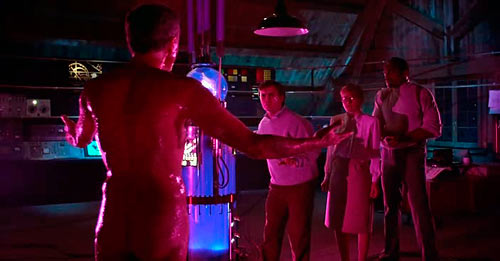A reader brought to my attention the Pioneer HTS-GS1 surround sound system for Xbox 360. It is, apparently, a passable but not fantastic speaker system. But fun is to be found in its specifications.
As I've explored before, consumer speaker systems often have highly inflated power numbers, becuase Joe Average reckons a "500W" system must be better than a "50W" one.
It doesn't actually really matter much what the power rating of a given speaker system is, since most listening even with inefficient speakers is done at only a few watts per channel, and ten times the power only sounds twice as loud. But the marketability of big power numbers has produced various perversions of this reasonably straightforward concept.
The Federal Trade Commission tried to apply the brakes at one point, giving rise to the interesting notion of "FTC watts". The honest wattage description - which the FTC tried to get people to use - was the root-mean-square or "RMS" watt. And then there are others, of variable reliability.
This old chestnut was brought to my attention again by the specs for the HTS-GS1. It's got front, centre and surround speakers which each, as is normal for cheap "home theatre in a box" setups, contain a single small widerange driver - a three incher, in this case. There's also a single subwoofer driver, about six inches in diameter.
The drivers together, if they were unusually beefy with big heavy magnet assemblies, might all together be able to handle a total of 150 watts (with a frequency response of maybe 70Hz to 14kHz). Realistically, something like 50 watts is as much amplifier as you'd be likely to ever need for such a setup.
Pioneer, shamelessly, say the system delivers "600 watts RMS".
(...and 25Hz to 20kHz, of course.)
Then they say OK, we know you wouldn't believe that, and go on to give an "FTC Output Rating" of "155 Watts Total System Power".
(They don't actually have that on the pioneerelectronics.com specs page, which is chiefly notable for its complete lack of any real specifications. But you can find it in the specs on various other pages, like here.)
I, being just plain mean, downloaded the manual (if you'd like to do the same then you'll need to "register", but nonsense data is fine; you don't even need a live e-mail address).
Within, I found this:

There are those two power ratings again, broken down by channel... but what's that below, under "Power requirements"?
Only 41 watts?!
Glory be, it's a miracle! This speaker system can output 3.78 times as many absolutely genuine FTC-certified Super Muscular All-American Watts as it takes to run it!
Quick, someone hook up arrays of HTS-GS1s to the power grid! The world's energy problems are solved!
Don't reward this kind of crap by buying these products.
No system-in-a-box with small single-driver main speakers and a six-inch sub is ever going to sound very good. It may be easy to set up, but you're paying for a bunch of portable radio speakers plus one tuned-for-muddy-thumps mid-bass driver.
Far better to buy a modest stereo amplifier and a couple of decent bookshelf speakers. That'll give you reasonable sound from in front of you, which in my opinion is far better than crap coming at you from all directions.
I don't mean to single out Pioneer in particular here, either. Every system-in-a-box that looks like this, whether it's made for a game console or for a home theatre, is going to be just about as bad.
If you only pay $US75 or something for the whole setup then it may be tolerable, for games at least. But even then, I'd rather spend the same money on stereo gear from a garage sale.
Even if that gear doesn't promise to make power out of nothing.




